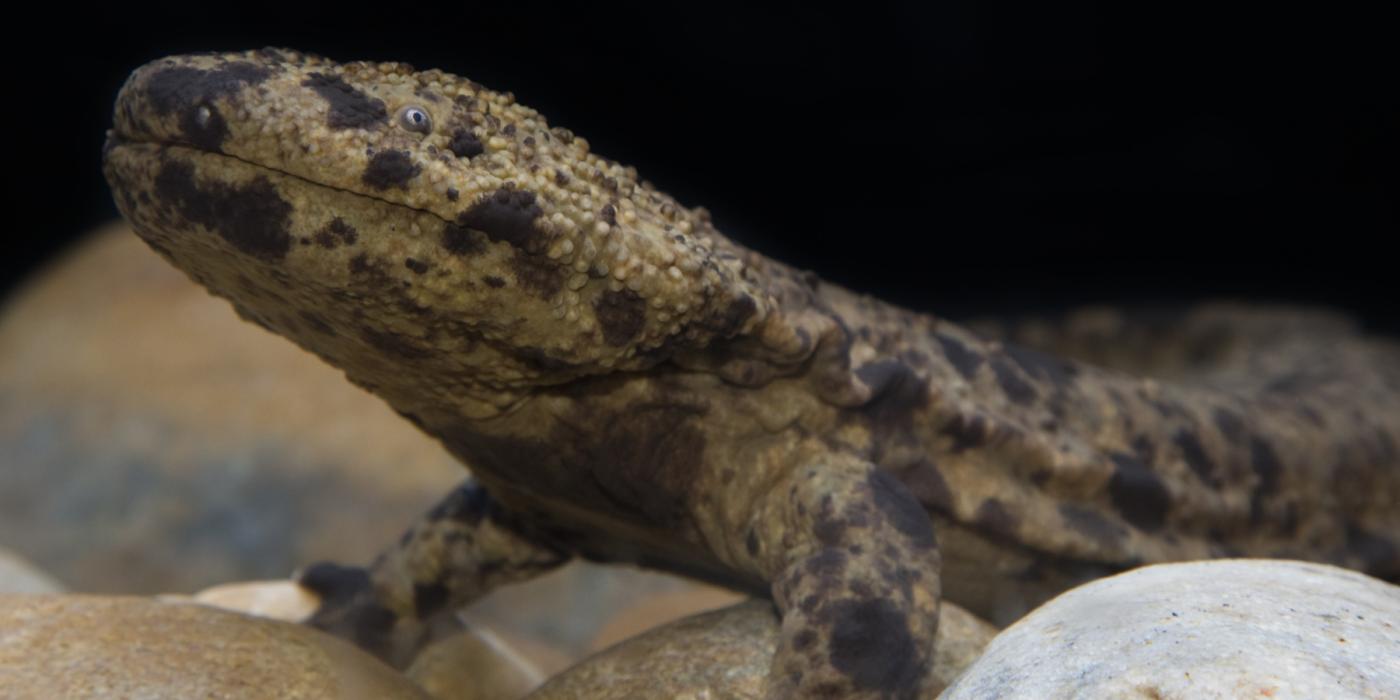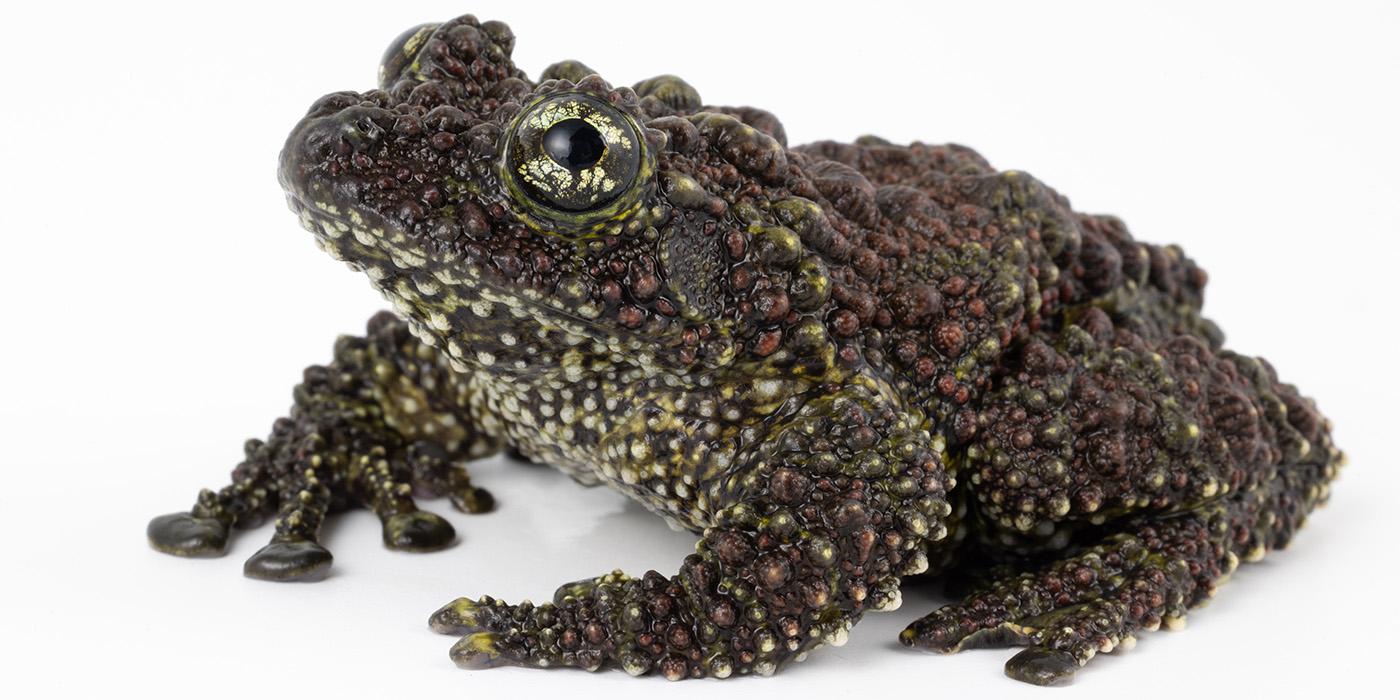Featured Creature: Japanese Giant Salamander
In August 2019, I embarked on a trip that took me across the Pacific Ocean to learn about enrichment, husbandry and breeding for the second-largest salamander species on earth: the Japanese giant salamander. The Smithsonian’s National Zoo’s salamanders arrived in 2009 from the Asa Zoo in Hiroshima, Japan, and ever since it has been a goal of the Reptile Discovery Center team to be the first in the United States to breed and hatch this species.

Hands down, my favorite memory from my trip was spotting Japanese giant salamanders in the wild — and not just one, but four of them! It’s difficult to put into words what an exciting experience that was for me. My trip into the field came about because of an ongoing study at Asa Zoo, which aims to track the development of these animals in their native habitat.
Our most incredible find was a Japanese giant salamander that they had not tracked before; it was truly amazing and special to “discover” a new animal for their study. Based on its size, my colleagues estimated the salamander to be between 20 and 30 years old. Under human care, Japanese giant salamanders can live well into their 70s!

Seeing their habitat and breeding grounds first-hand can inform how we design our exhibit at the Reptile Discovery Center and influence how we care for them when the next breeding season approaches. Equally important was shadowing my colleagues at Asa Zoo, as well as Ueno Zoo in Tokyo, Japan, and Honolulu Zoo in Hawaii, to see how their husbandry and breeding programs operate.

When most people think of animal enrichment, they might picture an orangutan building a nest with fleece blankets, or a giant panda shaking leaf-eater biscuits out of a puzzle feeder. Amphibian (and reptile) enrichment is just as essential to their physical and mental wellbeing as it is for mammals.
The main difference is that amphibian enrichment tends to focus on the environment of their exhibits rather than individual objects. Shadowing my colleagues at these zoos helped to shine a light on some of the environmental elements that can help improve our current husbandry setup and increase the chance of breeding success in the future.

For example, one of the major differences between Asa Zoo’s Japanese giant salamander enclosure and ours is location, first and foremost. They are fortunate to be located right on the salamanders' native habitat. Because of this, they are able to house their animals in an open tank systems, which uses water from the salamanders’ native streams. This means that the water already has all of the beneficial minerals — and follows the seasonal warming and cooling cycles.
While it isn’t possible for us to replicate Asa Zoo’s water system exactly, there are steps we can take at the Reptile Discovery Center to mimic those conditions. That includes things like raising or lowering the water levels to coincide with Japan’s rainy or dry seasons and adjusting temperatures throughout the year.
The waters move so swiftly in their native rivers, too, that there is not much plant life in them. When it comes time to breed, Japanese giant salamanders will find a rut along the bank of the river where they can hide and tend to their eggs. So, putting some nooks and crevices along the edge of the tank may help us replicate the areas where they nest in the wild.

To catch their prey in swift-moving water, Japanese giant salamanders have huge mouths relative to their body size. For being such a large animal, their eyes are quite tiny, so they rely heavily on their olfactory senses to seek out their meal. The types of foods we give to our salamanders also differs to the foods they receive in Japan. Asa Zoo almost exclusively feeds their animals loaches — a small, native fish.
Here at the Zoo, our salamanders receive frozen-thawed smelt, which is similar in size to the loaches, as well as live earthworms and frozen-thawed herring and shrimp. While it is nice to be able to offer them a variety, they definitely seem to prefer the smelt. Eventually, it would be neat to get loaches or another fish that is native to their habitat for them to try.
At the Reptile Discovery Center, our animal care team is hard at work making the final adjustments to our very own Japanese giant salamander exhibit, which is scheduled to open this winter. Keep an eye on the Zoo's Facebook, Twitter and Instagram pages for details as we work toward their big debut. Meantime, we continue to host our daily keeper talks at 11 a.m. and 3 p.m. near the Jewels of Appalachia exhibit. I hope to see you there!
This article appeared in the October 2019 issue of National Zoo News. This professional development opportunity was supported by grants from the Smithsonian’s National Zoo’s Enrichment and Training Committee and the National Capital Chapter of the American Association of Zookeepers.
Related Species:




